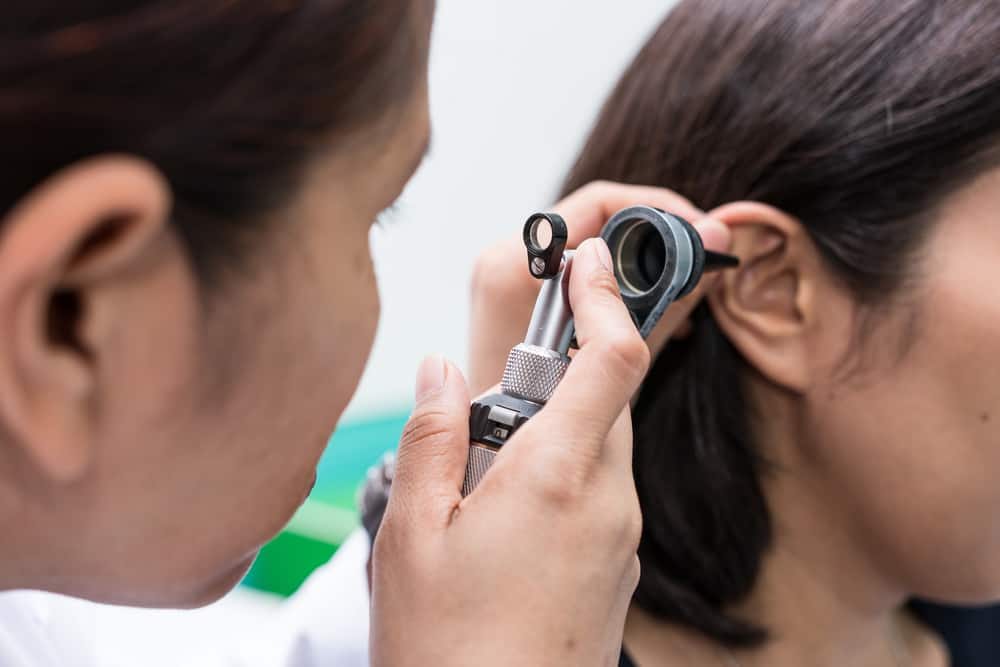Contents:
- Medical Video: Weber vs. Rinne Test & Conductive vs. Sensorineural Hearing Loss
- What is the Rinne test and the Weber test?
- Benefits of the Rinne test and Weber test
- What are the Rinne test procedures and the Weber test?
- Rinne test
- Weber test
- What are the results of the Rinne test and the Weber test?
- Rinne test
- Weber test
Medical Video: Weber vs. Rinne Test & Conductive vs. Sensorineural Hearing Loss
The Rinne test and the Weber test are tests to determine the presence of hearing loss, and whether there is a conductive or sensorineural hearing loss. This diagnosis is done to get early treatment and determine the right treatment plan. Here's a complete review of the Rinne test and the Weber test.
What is the Rinne test and the Weber test?
The Rinne test is a hearing test that is performed to evaluate hearing sounds by comparing sound perceptions delivered by air conduction with bone conduction through the mastoid.
The Weber test is another way to evaluate conductive and sensorineural hearing loss. The Rinne test results must be compared with the Weber test to detect sensorineural hearing loss.
Conductive hearing loss occurs when sound waves cannot pass through the middle ear to the inner ear. This can be caused by problems in the ear canal, eardrum, or middle ear, such as:
- Infection
- Earwax buildup
- Pierced eardrum
- Fluid in the middle ear
- Damage of the small bones in the middle ear
Sensorineural hearing loss is damage that occurs in any part of the nervous system specifically for the ear. These include the auditory nerve, hair cells in the inner ear, and other parts of the cochlea. Usually this type of hearing loss occurs due to exposure to noisy sounds and increasing age.
Benefits of the Rinne test and Weber test
The Rinne test and the Weber test are often used because these tests easily include simple and easy tests. Both of these tests are often the first tests used to determine the cause of change or hearing loss in a person.
These tests can help identify conditions that cause hearing loss. Some conditions that cause the Rinne test results or Weber tests to be abnormal include:
- Eardrum perforation
- Earwax
- Ear infections
- Middle ear fluid
- Otosclerosis, is the inability of the small bone in the middle ear (sangurdi bone) to move well
- Injury to the ear nerve
What are the Rinne test procedures and the Weber test?
The Rinne test and the Weber test are done using a high frequency (512 Hertz) fork to test how you respond to sounds and vibrations near your ear. The following is a description of the Rinne test procedures and the Weber test.
Rinne test
- The doctor places a fork in the mastoid bone (behind one ear).
- If you cannot hear the sound, you are asked to give a signal to the doctor.
- Then, the doctor will move the garut beside your ear.
- If you can't hear the voice again, you are asked to give a signal to the doctor.
- The doctor records how long you hear each sound.
Weber test
- The doctor places a fork in the middle of your head
- You note in the ears where vibrations are felt; left ear, right ear, both.
What are the results of the Rinne test and the Weber test?
Rinne test
Air conduction uses organs in the ears of the ear, eardrum, and osicles (three auditory bones) to strengthen the sound and drain sound into bone conduction and cause sound to be transmitted directly to the inner ear or through the skull to the ear next to it.
- Normal hearing, shows that air conduction time is two times longer than bone conduction time. In other words, you will hear the sound next to your ear twice as long as you will hear the sound behind your ear.
- Conductive hearing loss, bone conduction sounds sound longer than air conduction.
- Sensorineural hearing lossair sound sounds longer than bone conduction, but may not be twice as long.
Weber test
- Normal hearing will produce the same vibration in both ears.
- Conductive hearing loss will cause vibrations to feel in the ears that are not normal.
- Sensorineural hearing loss will cause vibration to feel in the normal ear.












